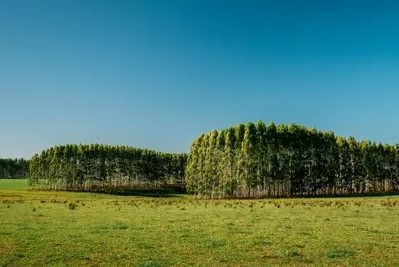 How do UPM’s eucalyptus plantations affect the ecological and social wellbeing of Uruguay?
How do UPM’s eucalyptus plantations affect the ecological and social wellbeing of Uruguay?
Our Q&A addresses some of the concerns raised about the impact that eucalyptus plantations have on biodiversity and the people. There are several case examples of eucalyptus cultivation in various locations, but we focus on our experience from the past three decades in Uruguay.
Claim: Eucalyptus plantations pose a threat to biodiversity.
On the land areas UPM manages in Uruguay we maintain diverse areas that include also natural ecosystems which sustain original flora predating forest cultivation. 60 per cent of the total land areas are eucalyptus plantations, whereas 40 per cent are left uncultivated. These uncultivated lands provide a habitat for natural flora and fauna. The largest areas include grasslands, natural forests, and wetlands.
There has been a system in place for the detection and protection of local species and ecosystems on UPM owned lands in Uruguay since the early 1990s. Today, the official network of protected land area covers about 14,000 hectares. Our goal is to increase the number of protected areas and continue our long-term biodiversity programme.
Claim: Old-growth and diverse forests are being turned into soil depleting monocultures.
This is not possible in Uruguay where all native forests are protected by law. The forestry practices in Uruguay are based on the Forest Act of 1987. This is the year when the government of Uruguay and all parties committed to a framework promoting industrial development with plantation forestry and the protection of native forests. Native forests in Uruguay have been protected since the enactment of the 1987 Forestry Law.
In the 1980s, Uruguay already had a highly developed, nationwide mapping system for land use. It identified areas that were not beneficial for traditional land use but suitable for forestry. Tree plantations are mainly established on lands that were previously used for grazing, and natural forests, protected by law in Uruguay, are not affected by tree plantations.
In Uruguay eucalyptus plantations have maintained the soil productivity for several decades and the soils are regularly monitored.
Claim: Working conditions on the plantations are inhumane.
UPM’s guidelines lay the foundations for respecting and promoting dignified and fair working conditions everywhere. In our global personnel rules, we have defined detailed principles for working conditions, employment conditions, and dignified work, following the definitions of the International Labour Organization (ILO). We adhere to international, national, and local laws and regulations in all our locations and respect international agreements on human and labour rights, including freedom of association.
Contractors play a central role in UPM's operations in Uruguay. We ensure that contractors and their employees have the same working conditions as all UPM employees.
Claim: Indigenous land is being unfairly seized.
UPM has established eucalyptus plantations in Uruguay on both purchased and leased land. The land acquisition protocols and legislation in Uruguay are advanced and comparable to the land and forest ownership and transactions in Finland.
Land in Uruguay is acquired through voluntary transactions (the "willing buyer – willing seller" principle), through a process of negotiating agreed-upon market prices. In Uruguay, land is not expropriated for the use of forestry companies, and the state cannot grant forestry companies access to areas without the permission of local communities or landowners. The market price paid for land ownership is determined based on supply and demand. Unlike many other Latin American countries, Uruguay no longer has an indigenous population.
Claim: Farmers are being displaced because of plantations.
UPM's land acquisition for tree plantations never leads to expropriation or involuntary relocation of farmers. UPM's tree plantations in Uruguay are established in a mosaic pattern, consisting of several smaller forestry units, allowing for ecological corridors and other land uses, such as livestock farming and honey production, between the plantations. UPM both owns and leases land from local landowners.
Claim: Seizing cultivable land risks lack of food resources for the local population.
Since the 1980s, Uruguay has had a highly developed nationwide mapping system for land use. It has identified areas that are not beneficial for traditional land use, such as grain cultivation, but instead suitable for forestry. Tree plantations are mainly established on lands that were previously used for grazing. Plantations are not established on lands classified for the cultivation of agricultural products.
Claim: Forestry production and wood use cannot be endlessly increased. In fact, the limits of sustainability have already been exceeded.
From a global perspective, the cultivation of forests and the use of renewable raw materials such as wood needs to be increased in order to diminish the use of fossil-based energy sources. Climate change accelerates biodiversity loss, making it necessary to rapidly replace these sources.
This requires active forest management, such as timely thinning and fertilisation. The forest industry operates on global markets, and several studies have shown that reducing logging would simply shift it as a carbon leakage from one area to another, potentially to countries with weaker industry monitoring and sustainability standards.
